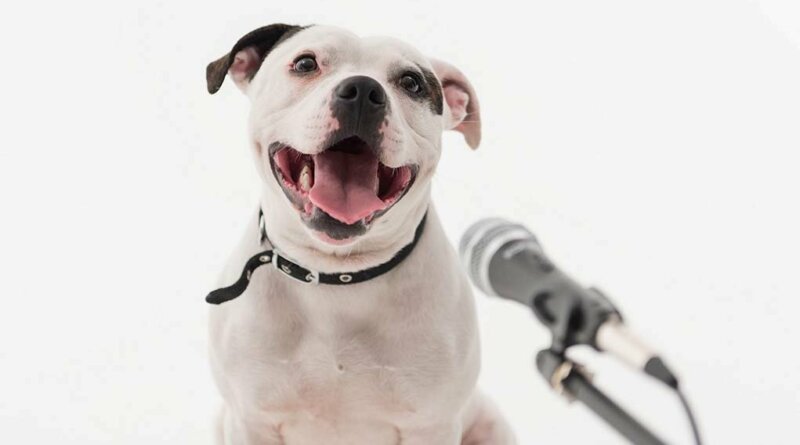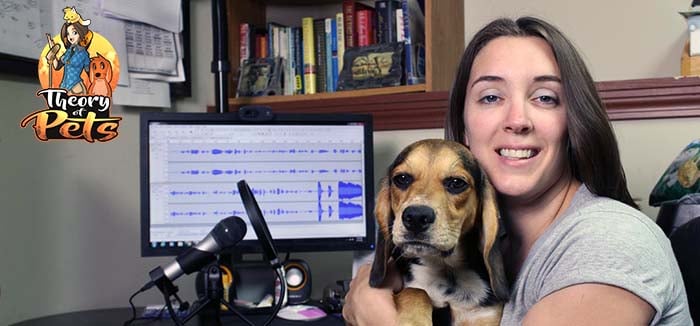7 Tips for Launching a Pets Podcast (And Lessons Learned from Others)
If you feel like you have something valuable to offer to pet owners, podcasting is a great way to put your content out there. I’ve been recording Theory of Pets podcast episodes for a number of years now (we’re on #120th episode), doing interviews with dog experts including veterinarians, trainers, businesses and more.
Although podcast have not been around as long as websites, they have exploded in the recent decade thanks to our need to curb boredom and better ourselves through listening as opposed to reading. This makes them very effective when we’re doing other tasks such as house cleaning, running or walking, and more.
While pet podcasts can be rewarding in many ways, the whole process – from planning to distribution and marketing – can feel a little daunting when you are just starting out. Here are a few ideas that will help you create great content and build a faithful audience for your next dog podcast, cat podcast or any other pet related niche.
7 Tips for Launching a Pets Podcast
1. Choose a More Specific Niche
Services like iTunes now offer hundreds and thousands of podcasts on every topic imaginable, and pets are no exception. But gaining popularity and following with a general interest podcast is much harder than claiming a more specific niche. A “Pets Podcast” would fall into that very general market due to its sheer size.
So at the very least, consider narrowing down to one or two species. Cats and dogs are obviously the most popular choice for podcasters, and if that’s where your interests lie too, be sure to offer an intriguing twist that will set you apart from the others. This will help you launch quicker, unless you’re doing something like what “Species” podcast has done.
2. Find Ways to Be Just Slightly More Original
The internet is full of content, so how exactly do you find something to talk about that no one has covered yet? Let me tell you a secret: you don’t. The chances of you actually offering completely unique, new information are slim to none, especially since the online pet community is extremely strong.
What you can do is offer your own perspective and give the topic a new angle. Personal experience is always a big draw for pet owners. Think about what makes you specifically unique as a pet owner. A good inspiration for this is “Dogs and the City” podcast.
For example, maybe you’re trying to juggle raising toddlers and puppies? Or maybe you have a lot of experience with breed shows? Use your voice and your story. It probably has more chance of success than copying your favorite show or host.
3. You Can Play with Formats
Podcasting is a creative outlet that allows for a lot of interesting experimentation. You don’t just have to record yourself providing boring, same old information. You can record plenty of shorter segments, include regular bits that appear in every episode, bring in a co-host, or do interviews.
Some shows have guest co-hosts who take over for an episode. This can be especially interesting for an online pet talk show. Interesting guests, like a veterinarian, a breeder, a dog trainer or dog behavior specialist, a celebrity or a company representative can contribute a lot of fascinating and useful information.
You can also invite other pet owners as your guests, what “The Purrrcast” podcast has done. Your guest pet owners can talk about their own personal experience and offer a unique individual strand in the story you are trying to tell.
4. Script Your Show
No matter how effortless and spontaneous your favorite podcast sounds, know that a lot of preparation has gone into it. You don’t have to write a word-for-word script and read off a paper the entire time, or rehearse it and deliver pre-written words in a stilted manner. However, a detailed outline will help your show feel consistent and professional.
One of my favorite podcasts, “Can I Pet Your Dog?“, clearly have a great system going. So similarly, keeping your show slightly scripted will also ensure that you don’t ramble or miss out on any important point that you wanted to make.
Writing (and rereading) your script before the recording will give you confidence and make your show smoother. Keep a concise version with you while you record too – a quick glance will help you out if you get stuck.
5. Go Back and Edit
Even with a script, your recording is likely to have glitches that need ironing out. When you listen back what you recorded, you’ll probably notice little things that you weren’t aware of while you were talking: awkward pauses, long, rambling tangents, or even a slip-up in the form of a swear word. “Pet Life Radio” does a fantastic job in this area.
All of these can be removed during the editing process. Recording the so-called “room tone” before each show is a useful trick. Just record a few seconds of silence once you’re all set up. It’s something you can use to cover swear words or background noise during the editing process.
6. Create a Unique Identity
One of the most attractive things for pet owner listeners is the host, and I personally love what “The Catexplorer” podcast is doing. A unique identity will help differentiate you from other, similar pet shows. Apart from your unique voice and good content, it also helps to pay attention to details. Come up with a name that is easy to remember, but unique enough to come up in searches straight away.
An interesting slogan will complement your name, make your show seem more professional, and sum up the tone and topic of your show for your listeners – all in a few words. You will also need a photo for your cover art, and if possible, a cute logo with a pet. These serve the same purpose as your slogan, but do it in visual terms.
Finally, choose your theme music. There are plenty of online resources, like the Free Music Archive where you can pick out the right tune for you. Or you can get one custom made for fairly cheap. You can hear my intro in every one of my Theory of Pets podcast episodes.
7. Dip Your Toe in First
We all get excited about new projects, and it can be easy to give in to overwhelming enthusiasm. Try making a trial dog podcast show first to see if this job is the right fit for you. The process includes much more than just talking about what you like. Be objective about whether you like the work, and whether you’re actually satisfied about the results.
If the answer to both questions is positive, consider whether you have anything left to say, or whether it was a single idea you needed to get out of your system. It’s best to make your first few episodes with amateur equipment – like a cheap digital microphone or even your smart phone, and free software. If, after a while, it seems like this podcast gig is going to stick, you can think about investing money into creating a more serious studio.
While there a lot of technicalities to take care of, pet podcasting is, ultimately, a creative endeavor. And as with all long-term creative projects, one of the most important secrets of success in this market is that you love what you do and have fun doing it, and that you do this with passion and knowledge.
READ NEXT: 20 Best YouTube Channels for Dog Lovers





